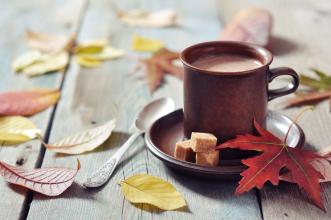High quality Colombian Coffee Flavor description Grinding characteristics introduction to the taste of varieties in producing areas
The pure taste of Colombia coffee comes from the natural environment of Colombia, which has the most favorable conditions for coffee growth. But beyond that, it is inseparable from the hard work of local growers. In Colombia, coffee is cultivated on 1.07 million hectares, there are about 302,000 coffee plantations in the country, and 30 to 40 per cent of the rural population depends directly on coffee production. Although Colombia has many farms, they are not large. Each farm has an area of only about 2 hectares, and more than 80% of coffee plantations have only about 5000 coffee trees, with an average of 3000. Thus, agriculture in Colombia is of the small farm type. Locals plant tall trees or banana trees around coffee trees. During the seedling stage, coffee trees are sheltered to ensure a cool and humid environment for coffee growth. Due to the humidity in the coffee forest, the temperature difference is small, and the coffee beans mature slowly, which is conducive to the accumulation of caffeine and aromatic substances, so the coffee quality is the best. Colombia's suitable climate provides a real sense of "natural pasture" for coffee. Coffee trees in Colombia are mainly cultivated in the Andes mountains, on steep slopes up to 1,300 meters above sea level, where the annual temperature is about 18 degrees Celsius, the annual rainfall is 2000 to 3000 mm, the north latitude is 1 °-11 ° 15, the west longitude is 72 ° -78 °, and the specific altitude range can exceed 2.000 meters. By a particular combination of various factors, latitude, altitude, soil, plant origin of species and variety of coffee making in coffee growing areas of Colombia, climate in coffee growing areas and rain patterns resulting from dual paths of tropical convergence, changing topography throughout the day, luminosity, favorable temperature ranges throughout the year, distribution of moderate and rainwater, and some common cultural practices including selective harvesting and transformation processes, including washing and drying. Very suitable for coffee growth, mild climate, humid air, and can be harvested regardless of season. That's why Colombia coffee is so good. Colombia has three Cordillera mountains running north-south, right into the Andes. Coffee is grown along the highlands of these mountains. The terraces provide a diverse climate, with harvest seasons throughout the year and different types of coffee maturing at different times. And fortunately, unlike Brazil, Colombia doesn't have to worry about frost damage. Colombia has approximately 2.7 billion recorded coffee trees, 66 per cent of which are grown on modern plantations and the rest on small traditionally managed farms. Colombia coffee is mainly grown in arabica, i.e. small fruit coffee (Arabica coffee), and relatively large fruit coffee (Coffea robusta) is mostly grown in Africa of origin, such as the famous Madagascar coffee. There are several varieties of small fruit coffee. Brazil coffee, which has the largest output in the world, has large seeds, strong adaptability and high fruit yield; in contrast, mild coffee produced in Colombia is a better variety, which is related to its special geographical location and climate environment. Colombia coffee is divided into more than 200 grades, and the regionality of coffee is very strong. Colombia beans are SUPERMO, followed by EXCELSO; however, specialty coffee above 18 beans (18/64 inches in diameter) can only be included in specialty coffee. Colombia coffee has a balanced flavor and a smoother taste, just like a gentleman in coffee. It has a wide range of producing areas, but the coffee in the central mountains is the best and the texture is thick. The most famous producing areas are Medellin, Armenia and Manizales, which are commonly referred to as "mam". The taste of "narino" is delicious and the quality is very good. Starbucks, which sells specialty coffee, is said to have exclusive rights to "narino supermo" coffee beans, which are common in their chain stores

Important Notice :
前街咖啡 FrontStreet Coffee has moved to new addredd:
FrontStreet Coffee Address: 315,Donghua East Road,GuangZhou
Tel:020 38364473
- Prev

Description of the flavor of Rwandan coffee with sweet fruit introduction to the characteristics of varieties in producing areas
[product name]: Rwanda bourbon boutique coffee (Rwanda Bourbon Specialty) [quality rating]: AA [roasting degree]: recommended roasting degree city or deep city roasting (City Roast or Full City Roast) [grade]: good [granule]: ★★ full [acidity]: ★★★ micro acid [equilibrium]: ★★★ stable [flavor]: soft
- Next

Description and treatment of Hawaiian Coffee Flavor introduction to the taste manor of variety producing areas
The earliest coffee cultivation in Hawaii had adopted the model of large-scale coffee plantations, and at that time, coffee had not yet become a widely grown crop in the world, and the production and sale of Kona coffee had experienced several ups and downs. After the outbreak of the first World War, the demand for coffee increased sharply. The government bought large quantities of coffee for soldiers in order to maintain their combat ability.
Related
- Detailed explanation of Jadeite planting Land in Panamanian Jadeite Manor introduction to the grading system of Jadeite competitive bidding, Red bid, Green bid and Rose Summer
- Story of Coffee planting in Brenka region of Costa Rica Stonehenge Manor anaerobic heavy honey treatment of flavor mouth
- What's on the barrel of Blue Mountain Coffee beans?
- Can American coffee also pull flowers? How to use hot American style to pull out a good-looking pattern?
- Can you make a cold extract with coffee beans? What is the right proportion for cold-extracted coffee formula?
- Indonesian PWN Gold Mandrine Coffee Origin Features Flavor How to Chong? Mandolin coffee is American.
- A brief introduction to the flavor characteristics of Brazilian yellow bourbon coffee beans
- What is the effect of different water quality on the flavor of cold-extracted coffee? What kind of water is best for brewing coffee?
- Why do you think of Rose Summer whenever you mention Panamanian coffee?
- Introduction to the characteristics of authentic blue mountain coffee bean producing areas? What is the CIB Coffee Authority in Jamaica?

